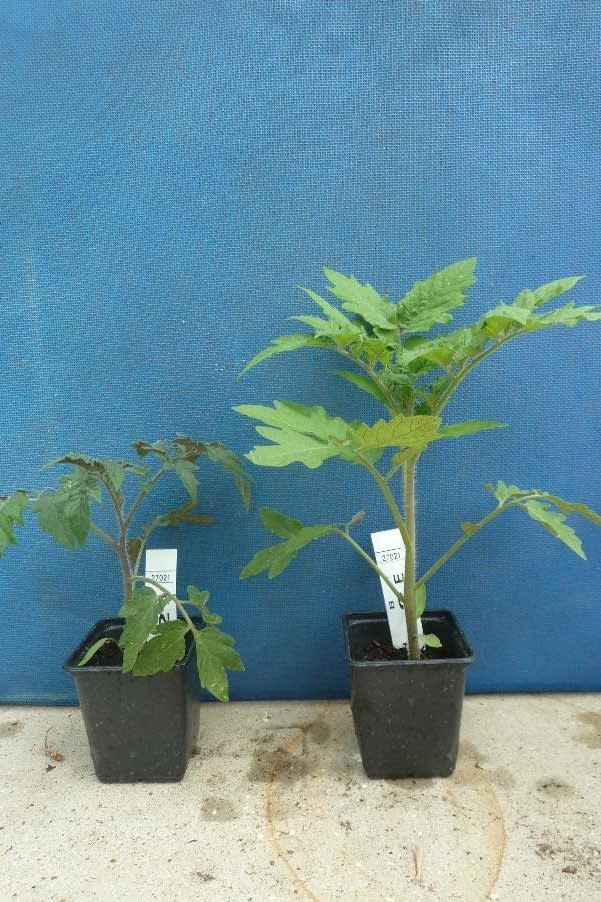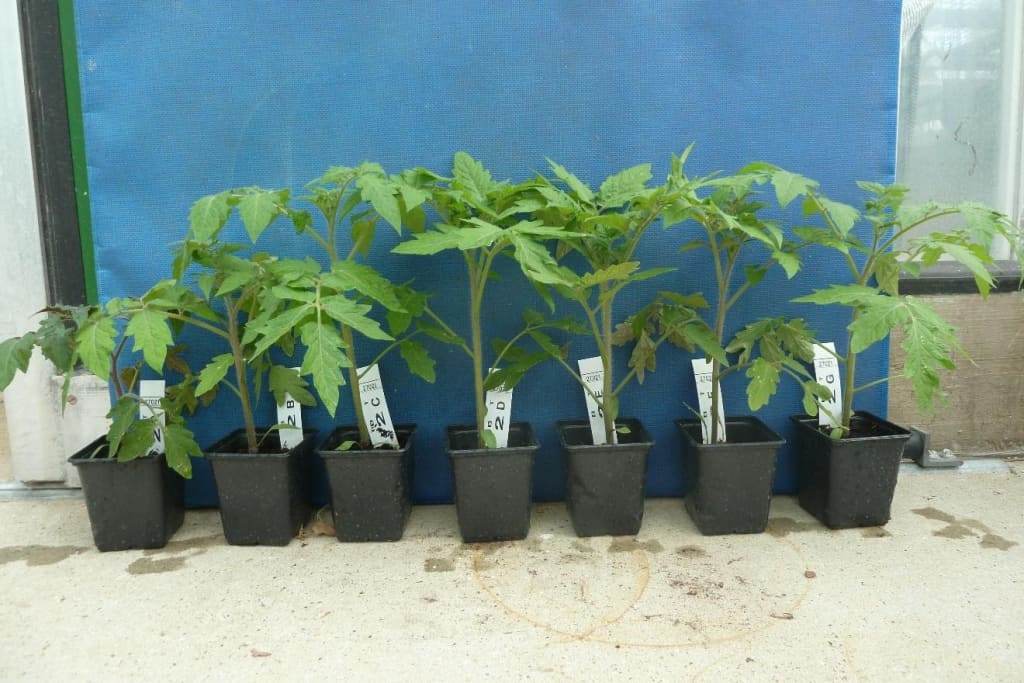The proof of the pudding is in the growing!

Why did we do it?
We were keen to prove what we already believed about the effectiveness of our mulch as a soil improver + see the effects in a clinical unbiased environment. The independent trial objective was: “To determine the effectiveness of digestate fibres produced from Anaerobic Digestion units as soil improvers for horticulture.”
Who ran the trial?
The trial was undertaken by East Malling Services independent soil consultant Susie Holmes (BSc Hons, CSci). Susie is a soil scientist specialising in horticultural growing media and soil management. She has worked for ADAS for 25 years as horticultural and soils consultant, working across all crops in both consultancy and research projects. The specific areas of work Susie specialises in are the use of green compost for soil amelioration, soil erosion and the use of non-peat materials in growing media.
How we undertook the trail?
Tomato seedlings were potted up with a variety of test mixes half of which were Apsley Mulch and the other half an industry competitor. Planted in 9cm pots and grown in a heated glasshouse. There were 20 replicates of each treatment in order to ensure a statistically valid experiment. The day temperature was set at 20oC and night at 12oC.
Treatments:
TREATMENT A Control – Westland Seed Compost.
TREATMENT B 90/10 Seed compost/Industry competitor fibre.
TREATMENT C 90/10 Seed compost/Apsley fibre.
TREATMENT D 80/20 Seed compost/Industry competitor fibre.
.
TREATMENT E 80/20 Seed compost/Apsley fibre.
TREATMENT F 60/40 Seed compost/Industry competitor fibre.
TREATMENT G 60/40 Seed compost/Industry Apsley fibre.
The results

Control (100% seed compost) vs 20% Apsley Mulch/ 80% compost

Control |10%IC | 10% Apsley | 20%IC | 20%Apsley | 40%IC | 40%Apsley
● Both the digestate materials improved the structure and aeration of the
seed compost and produced healthier more vigorous plants than the seed
compost on its own
● The 20% inclusion rate seemed to give the best results, but all the rates
performed well.
● The results would suggest that the digestate fibre has good potential as a
soil improver, typically mixed with garden soil at around 1 part to 3 parts
soil.
Tomato plant quality scores, 1- 10 (27 September 2016):

For the full independent trial results, click here


